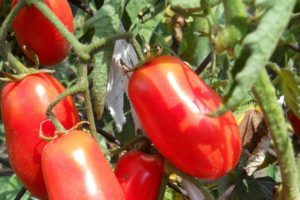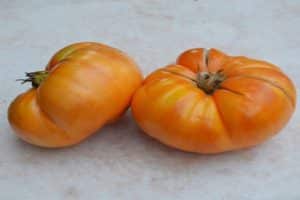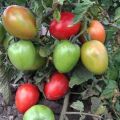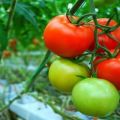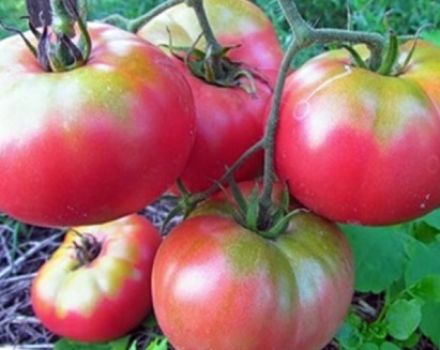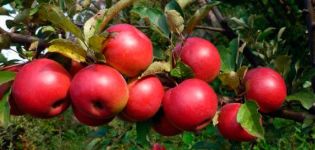Description of the tomato variety Golden Age, its characteristics and productivity
The Golden Age tomato was the result of the labors of breeders, whose goal was to breed crops for the West Siberian region. The variety can show good yields when grown outdoors and in film constructions.
The fruits have a rich lemon-yellow color, and with proper cultivation techniques, the average weight of the fruits is 600 grams. The plant is unpretentious to climatic conditions and even under unfavorable conditions it is capable of showing good yield indicators.
Gardeners' reviews say that with proper cultivation technique and sufficient watering, 6 kg of tomatoes are removed from one bush of the plant, with a lack of moisture and an arid climate, the figures are reduced to 4 kg. The characteristic and description of the variety classifies it as a tall species, the height of an adult plant can reach 1.4 meters, therefore, tying is recommended.
Growing and care features
Cultures are advised to grow in seedlings, forming an adult plant in 2-3 stems. Sowing of the planting material is carried out so that the shoots at the time of planting in a permanent growing place are from 50 to 60 days.
Before planting, prepare the soil, loosen the soil well and enrich it with nutrients. The holes are formed deep enough, and the beds are raised above the main ground level. It is recommended when planting to adhere to the planting scheme in the form of 3-4 shoots per square meter.
It is important for the plant to ensure the constancy of the temperature regime and to exclude the presence of drafts, strong gusts of wind.
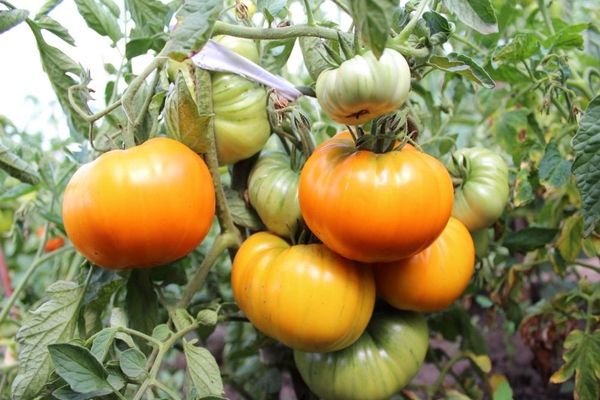
After the roots take root and begin to stretch upward, it will be necessary to provide the bushes with support in the form of tying up the shoots. The pinching procedure for the variety is considered mandatory.
Advantages and disadvantages
The Golden Age has fleshy, aromatic fruits that are perfect for salads. Description of the variety and its advantages:
- stress resistance to weather conditions;
- plasticity of tomatoes;
- round shape of yellow fruit;
- the ability of a tomato to reach a mass of 600 grams;
- the possibility of year-round fruiting;
- good yields both in open field cultivation and in greenhouse conditions.
Such tomatoes can be eaten by people who are prone to allergic reactions to the traditional red tomato varieties. The rich composition of vegetables contributes to the preservation of immunity, so the variety is recommended for use by young children and patients with diabetes. The peculiarities of the composition of ripe tomatoes help to cleanse the body of toxins and toxins, improve the composition of the blood and reduce the risk of developing oncology.
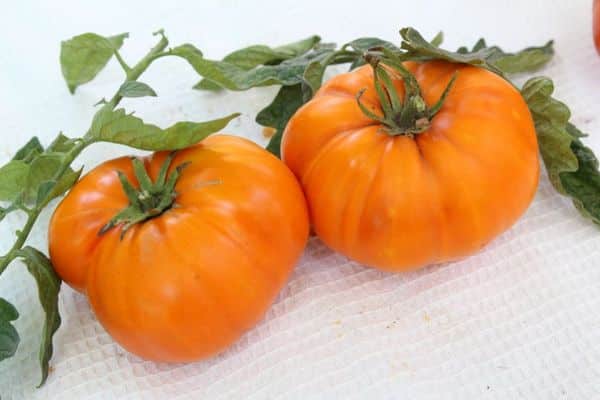
Pests and diseases
The variety is resistant to major tomato diseases and pests. Resistant to late blight, despite the fact that it likes sufficient watering and moisture. Fungal disease occurs mainly due to sudden changes in temperature and excessive moisture in the plant.
The first sign of damage is blackening of the leaves, which eventually fall off. At the first signals of danger, the infected plant is removed from the planting site and the bushes are processed.
Harvesting and storage
Collecting and storing tomatoes of this variety does not differ significantly from standard rules. Ripe fruits are consumed fresh within a few weeks after removal. Unripe fruits can be stored in a dark, cool room until they ripen, thereby prolonging the period of consuming fresh vegetables.
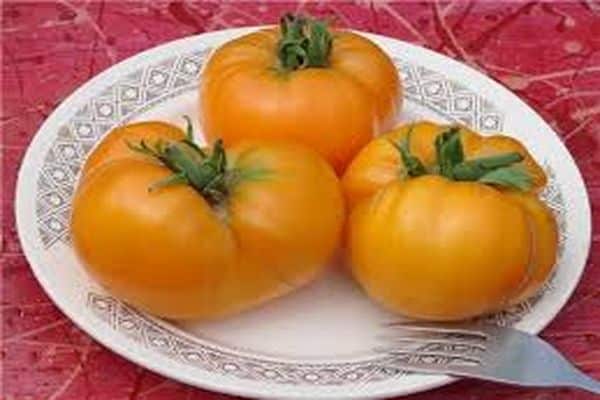
Gardeners reviews
Anastasia, 33 years old:
“Gardening has been my hobby for the past few years. I recently turned my eyes to yellow varieties of tomatoes and try to experiment every year. An annoying nuisance struck the Golden Age last year. The pallet with the seedlings fell and the bushes were badly damaged. Despite the misunderstanding and dry summer, the variety pleased with its yield, and on average 4.5 kg of yellow large tomatoes were removed from one plant ”.
Svetlana, 59 years old:
“I can only say one thing about the yellow tomato variety - super. 5 kg of tomatoes were removed from each bush, which in our climate is considered almost impossible. Tomatoes have a rich taste and a lemon-yellow hue, which looks very unusual in salads. "
Growing and care features
Cultures are advised to grow in seedlings, forming an adult plant in 2-3 stems. Sowing of the planting material is carried out so that the shoots at the time of planting in a permanent growing place are from 50 to 60 days.
Before planting, prepare the soil, loosen the soil well and enrich it with nutrients. The holes are formed deep enough, and the beds are raised above the main ground level. It is recommended when planting to adhere to the planting scheme in the form of 3-4 shoots per square meter.
It is important for the plant to ensure the constancy of the temperature regime and to exclude the presence of drafts, strong gusts of wind.

After the roots take root and begin to stretch upward, it will be necessary to provide the bushes with support in the form of tying up the shoots. The pinching procedure for the variety is considered mandatory.
Advantages and disadvantages
The Golden Age has fleshy, aromatic fruits that are perfect for salads. Description of the variety and its advantages:
- stress resistance to weather conditions;
- plasticity of tomatoes;
- round shape of yellow fruit;
- the ability of a tomato to reach a mass of 600 grams;
- the possibility of year-round fruiting;
- good yields both in open field cultivation and in greenhouse conditions.
Such tomatoes can be eaten by people who are prone to allergic reactions to the traditional red tomato varieties. The rich composition of vegetables contributes to the preservation of immunity, so the variety is recommended for use by young children and patients with diabetes. The peculiarities of the composition of ripe tomatoes help to cleanse the body of toxins and toxins, improve the composition of the blood and reduce the risk of developing oncology.

Pests and diseases
The variety is resistant to major tomato diseases and pests. Resistant to late blight, despite the fact that it likes sufficient watering and moisture. Fungal disease occurs mainly due to sudden changes in temperature and excessive moisture in the plant.
The first sign of damage is blackening of the leaves, which eventually fall off.At the first signals of danger, the infected plant is removed from the planting site and the bushes are processed.
Harvesting and storage
Collecting and storing tomatoes of this variety does not differ significantly from standard rules. Ripe fruits are consumed fresh within a few weeks after removal. Unripe fruits can be stored in a dark, cool room until they ripen, thereby prolonging the period of consuming fresh vegetables.

Gardeners reviews
Anastasia, 33 years old:
“Gardening has been my hobby for the past few years. I recently turned my eyes to yellow varieties of tomatoes and try to experiment every year. An annoying nuisance struck the Golden Age last year. The pallet with the seedlings fell and the bushes were badly damaged. Despite the misunderstanding and dry summer, the variety pleased with its yield, and on average 4.5 kg of yellow large tomatoes were removed from one plant ”.
Svetlana, 59 years old:
“I can only say one thing about the yellow tomato variety - super. 5 kg of tomatoes were removed from each bush, which in our climate is considered almost impossible. Tomatoes have a rich taste and a lemon-yellow hue, which looks very unusual in salads. "
